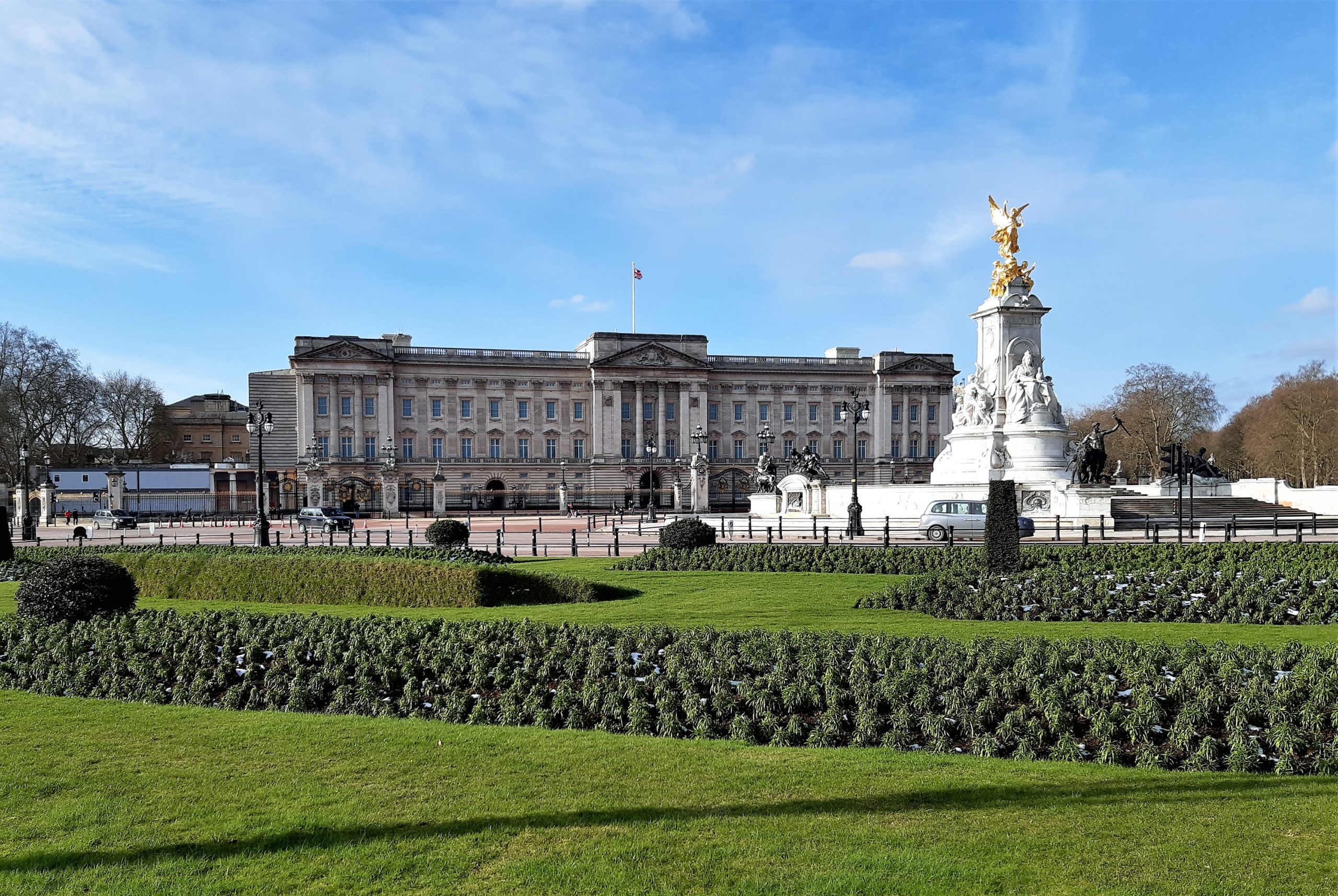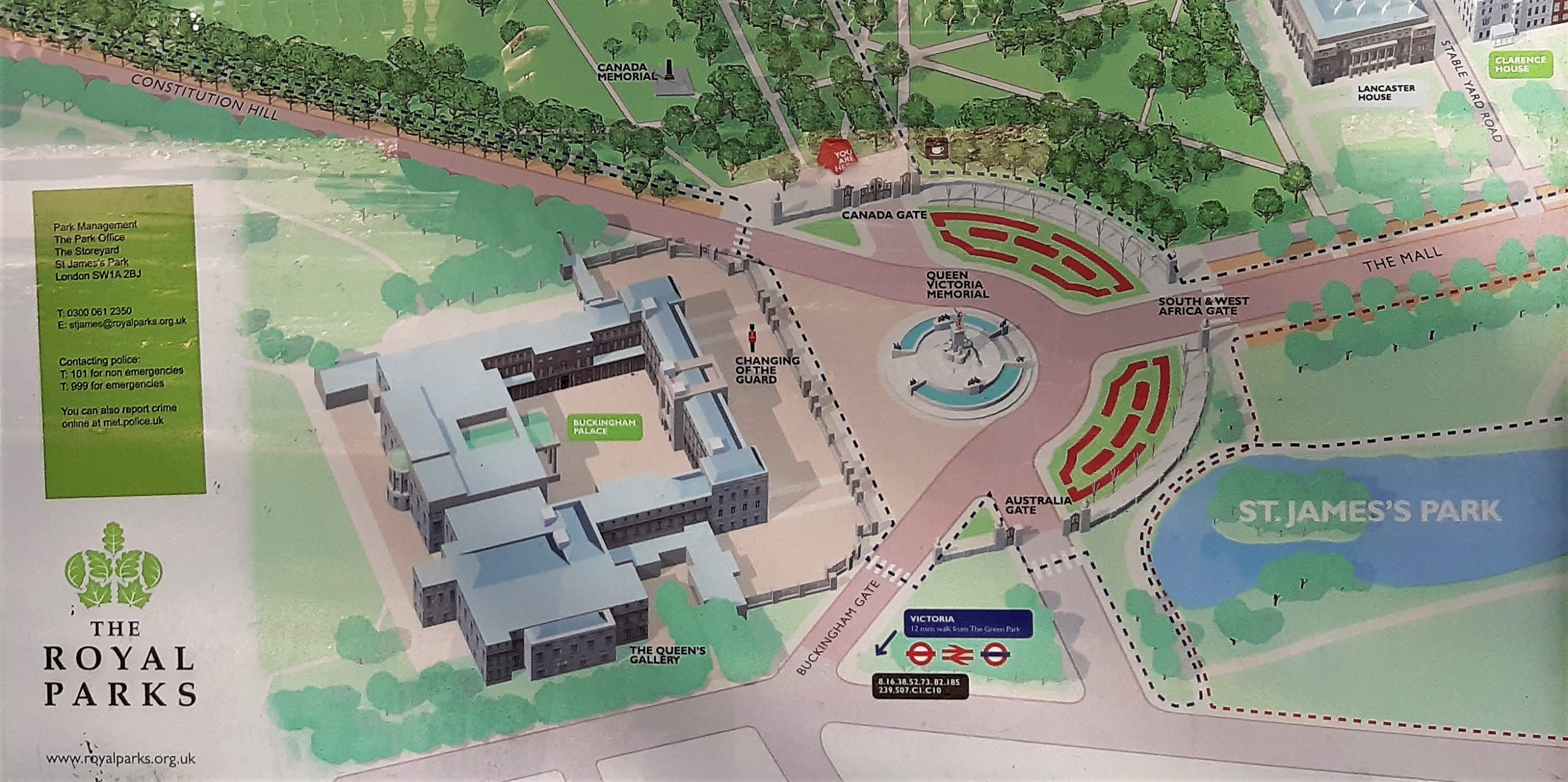Queen Victoria Memorial versus The Albert Memorial: Part 2 – Victoria
Queen Victoria Memorial
The Mall, London SW1.
This is the second part of my definitive guide to the Queen Victoria Memorial and to the Albert Memorial. Married in life, separated by death and each the recipient of a grand, excessive and elaborately detailed London memorial. Victoria and Albert were a pair in life and are now adversaries in a face-off to see which of them has the most overblown and extravagant memorial in London. Queen Victoria died almost 40 years after Albert and her memorial is thirty five years newer. Victoria’s death and the creative trends behind this memorial marked an end to the Victorian and Edwardian eras.

Queen Victoria Memorial and Buckingham Palace
Victoria (born Alexandrina Victoria in Kensington Palace; May 1819-January 1901) was Queen of the United Kingdom of Great Britain and Ireland from June 1837 until her death in 1901. She gave her name to the Victorian era reigning for 63 years and seven months, longer than any previous British monarch. It was a period of industrial, political, scientific and military change within the United Kingdom and was marked by continuing expansion of the British Empire. In 1876 Parliament voted to grant her the additional title of Empress of India. Victoria married her first cousin Prince Albert of Saxe-Coburg and Gotha in 1840. They had nine children and following his sudden death in 1861 Victoria went into almost perpetual mourning.
Following Victoria’s death her son, King Edward VII, suggested that a Parliamentary committee should be formed to develop plans for a memorial. The first meeting took place in February 1901 at the Foreign Office in Whitehall. Sites for the memorial in The Mall and in Green Park were soon dismissed in favour of its present position. Thomas Brock’s design had been accepted by July.
Funds poured in from all over the British Empire. So much that the money also paid for Sir Aston Webb to design and build Admiralty Arch, reface the rather glum Buckingham Palace and add new gates and railings. Webb also widened The Mall, redesigned the road system around Brock’s monument and built the Dominion Gates, now referred to as the Commonwealth Gates.
The Queen Victoria Memorial like its ‘husband’ the Albert Memorial, is unashamedly Over.The.Top. It marks the end of the over-decorated, over-symbolic monument with allegory bursting out of every cornice, niche and plinth. Only nine years after this memorial’s unveiling Lutyens austere, dignified and very modern Cenotaph would be unveiled in Whitehall.

Sculptor: Sir Thomas Brock (1847-1922).
Dates: Commissioned March 1901. Unveiled 16th May 1911. Completed 1924.
Materials: Pentelic marble, Carrara marble, granite, bronze and gilded bronze.
Dimensions: 82 feet/25 metres high. 104 feet/32 metres wide.
Architecture: The central pylon stands on a quadrilobal base, surrounded by a parapet, rising from a large circular podium. Steps on the east and west sides lead up to the parapet and to the statues of Queen Victoria and Motherhood, which both sit in scallop-headed niches.
Statues on the pylon:
Queen Victoria – is wearing a small crown and holding an orb surmounted by George and the Dragon in her left hand. In her right hand she holds a sceptre (faces The Mall). Carrara Marble.
Motherhood – is wearing a turban or scarf, one bare breast suckling a baby. A child stands embraced on her left and another child nestles in the folds of her dress (faces Buckingham Palace). Carrara marble.
Truth – is represented by a winged female. She is wearing a diadem and holding a mirror. To her left is a child holding a palm. A turbaned woman sits to her right, reading a scroll (faces Wellington Barracks). Carrara marble.
Justice – is represented by helmeted female holding a sword. She supports a naked young woman to her right and on her left is a naked child struggling under the weight of a pair of scales (faces Green Park). Carrara marble.
The pylon is topped by a statue of ‘Winged Victory, Constancy and Courage’. Winged Victory holds a palm leaf representing victory or triumph. Constancy holds a compass pointing true north and helmeted Courage holds a club. The marble eagles below the figures represent Empire. Gilt bronze – bronze covered in gold leaf.
On the curved cusps of the base the prows of four antique ships project outwards. It’s believed they represent the fighting and merchant ships of Britain’s combined navy.
Statues and figures on the podium:
Progress – is represented by a semi-naked youth holding a torch (facing The Mall). Bronze.
Peace – is represented by a draped female figure holding an olive branch (facing The Mall). Bronze.
Agriculture – is represented by a female figure in peasant costume. She holds a sickle and sheaf of corn (facing the Palace). Bronze.
Manufacture – is represented by a bearded smith in leather apron. He is holding a forging hammer in his left hand and a scroll in his right hand. Pincers are slid into his belt (facing the Palace). Bronze.
Each figure is represented with a Walking Lion symbolizing Power. Bronze.
The podium sculptures were installed in 1914.
On the outer face of the parapets are stone friezes emblematic of Sea Power called Children of the Sea. Swimming and riding Tritons, Nereids and sea children are accompanied by mythical and real sea creatures: dolphins, sea horses and hippogriffs. Bronze panels at each end of the friezes feature bearded male waterspouts, framed by dolphins.
Nude figures reclining on arch pediments:
Army (male – holding a sword and round shield) and Navy (female – cradles a galleon). They symbolize courage and face Wellington Barracks. Bronze.
Science (male – holding a compass and a scroll) and Art (female – holding a pallet and brushes). They symbolize intelligence and face Green Park. Bronze.
Merman and Mermaid. Below ‘Army and Navy’ and ‘Science and Art’ are two fountain panels. Under ‘Army and Navy’ is a merman reclining on a shell with a mermaid behind. Under ‘Science and Art’ is a mermaid reclining on a shell with a merman behind. Bronze.
Memorial Minutae
-
Even before his commission Thomas Brock had been thinking about how and where he could instal ‘a monument symbolic of Empire’.
-
When Brock told Edward VII it would take ten years to complete the king replied, ‘Why we shall be in our graves by that time’. He was.
-
Victoria’s grandson Kaiser Wilhelm II came for the king’s funeral in 1910. He suggested ‘Motherhood’ should be replaced by ‘Edward VII’. It nearly was.
-
Brock was paid £100,000. His studios were in Regents Park (near Primrose Hill) and at larger premises in Percy Road, Shepherds Bush.
-
The memorial is made of 2,300 tons of marble, 800 tons of granite and 70 tons of bronze.
-
Non-figurative and architectural stonework was carried out by the firms of Messrs. Joseph Whitehead & Sons Ltd of Kennington and Walton, Gooddy & Cripps Ltd of Bristol and Liverpool.
-
The model for the smith in ‘Manufacture’, Angelo Colorossi, had also been the model for ‘Eros’ at Piccadilly Circus (Alfred Gilbert, 1893).
-
At the official unveiling on 16th May 1911 (central pylon only, no surround statues) King George V called for his sword, motioned to Thomas Brock and knighted him on the spot.
-
Designed in the modern-baroque fashion of the late 19th century. Completed during the post-WW1 modernist era. Reviews were mixed.
-
Writer Osbert Sitwell described it thus: ‘Tons of allegorical females in white wedding cake marble with whole litters of their cretinous children.’
-
London cabbies still call it ‘the Wedding Cake.’
-
Diamond Jubilee 2012: Re-carving was required for the orb of St George and the Dragon, which had been broken off and stolen from Queen Victoria’s statue, along with her nose, fingers and the cross from her crown. ‘Winged Victory, Constancy and Courage’ was also re-gilded, taking three weeks and using thousands of gold leaf sheets.
